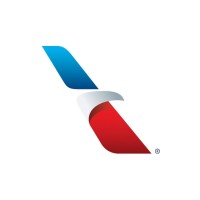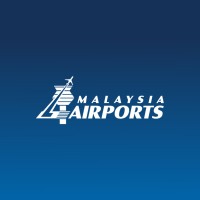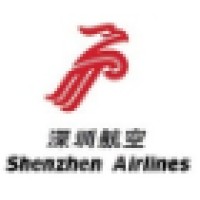Company Cyber Security Posture
NANA
NA Company Details
NA
NA
NA
NA
NA
NA
Scan still pending
NA
NA
Between 200 and 800
This score is AI-generated and less favored by cyber insurers, who prefer the TPRM score.
 NA Global Score
NA Global Score.png)

Company Scoring based on AI Models
| Model Name | Date | Description | Current Score Difference | Score |
|---|---|---|---|---|
| AVERAGE-Industry | 03-12-2025 | This score represents the average cybersecurity rating of companies already scanned within the same industry. It provides a benchmark to compare an individual company's security posture against its industry peers. | N/A | Between 200 and 800 |
Company Cyber Security News & History
| Entity | Type | Severity | Impact | Seen | Url ID | Details | View |
|---|
Company Subsidiaries

NA
Access Data Using Our API

Get company history
.png)
NA Cyber Security News
Thai Airways to exit debt restructuring programme
Thailand's national airline went into bankruptcy-protected restructuring in 2020, reducing its workforce by half and trimming its fleet. Make ...
Analysis: Commercial Aviation Cybersecurity Threats in 2025
DALLAS — In 2025, the commercial aviation industry will face the highest number of Cybersecurity risks. Affected by the global reliance on ...
Thai Airways deploys Juniper’s AI-Native Networking Platform
With the upgrades, Thai Airways can now achieve better simplicity, productivity and consistent performance at scale to deliver exceptional end- ...
Thai Airways modernises network infrastructure to enhance operations - Digital Transformation
Thai Airways, flag carrier of Thailand has deployed artificial intelligence-native networking platform to modernise its network ...
US reinstates Thailand's top aviation safety rating
The U.S. Federal Aviation Administration said on Wednesday it had upgraded Thailand's air safety rating to "Category 1" a decade after a ...
Cybersecurity firm at heart of massive IT outage says the issue is not a cyberattack or security incident. Here’s the latest
A major internet outage affecting Microsoft is disrupting flights, banks, media outlets and companies across the world, with problems continuing hours.
Thai Airways seeks to raise up to $1.27 bln to exit restructuring plan
Thai Airways International is planning to raise as much as 44 billion baht ($1.27 billion) by issuing 9.82 billion new shares, ...
Fix delivered for tech outage that caused chaos worldwide
The cybersecurity firm CrowdStrike has deployed a fix for a software problem that triggered one of the biggest tech outages the world has ever seen.
Thales in Thailand
Thales sits at the forefront of Thailand's digital transformation. We are the leading supplier of banking and payment solutions, including cards and services, ...

NA Similar Companies

British Airways
As a global airline and the UK’s flag carrier, British Airways has been flying its customers to where they need to be for more than 100 years. The airline connects Britain with the world and the world with Britain, operating one of the most extensive international scheduled airline route networks to

Ethiopian Airlines
Ethiopian Airlines Group (Ethiopian) is the fastest growing Airline Group in Africa. In its seventy plus years of operation, Ethiopian has become one of the continent’s leading carriers, unrivaled in efficiency and operational success. Ethiopian commands the lion’s share of the Pan-African passe

Turkish Airlines
Turkish Airlines has soared to new heights since its first flight in 1933, becoming the airline that connects more countries than any other. Our commitment to excellence is reflected in the world-class service, comfort, and innovative travel experience we offer, designed to elevate every journey.

American Airlines
Embark on an adventure with a commitment to service, excellence and humanity. Our team is what powers our airline. We are proudly dedicated to our purpose of caring for people on life’s journey, including connecting our customers to the people and places they love or providing our team members devel

Malaysia Airports
Our Vision A Global Airport Group That Champions Connectivity and Sustainability Our Brand Promise Hosting Joyful Connections About Malaysia Airports Malaysia Airports manages and operates 39 airports in Malaysia and one international airport in Istanbul, Turkey. The 39 airports in Malays

Shenzhen Airlines
Shenzhen Airlines was founded in November 1992 and started its service on September 17th, 1993. It is a joint-stock Airline Company specializing in air passenger, cargo and mail transportation and now it is China's 5th biggest carrier. Shenzhen Airlines has managed more than 95 aircrafts by Jan, 201

Frequently Asked Questions
Explore insights on cybersecurity incidents, risk posture, and Rankiteo's assessments.
NA CyberSecurity History Information
How many cyber incidents has NA faced?
Total Incidents: According to Rankiteo, NA has faced 0 incidents in the past.
What types of cybersecurity incidents have occurred at NA?
Incident Types: The types of cybersecurity incidents that have occurred include .
Additional Questions
What Do We Measure?
















Every week, Rankiteo analyzes billions of signals to give organizations a sharper, faster view of emerging risks. With deeper, more actionable intelligence at their fingertips, security teams can outpace threat actors, respond instantly to Zero-Day attacks, and dramatically shrink their risk exposure window.
These are some of the factors we use to calculate the overall score:
Identify exposed access points, detect misconfigured SSL certificates, and uncover vulnerabilities across the network infrastructure.
Gain visibility into the software components used within an organization to detect vulnerabilities, manage risk, and ensure supply chain security.
Monitor and manage all IT assets and their configurations to ensure accurate, real-time visibility across the company's technology environment.
Leverage real-time insights on active threats, malware campaigns, and emerging vulnerabilities to proactively defend against evolving cyberattacks.




